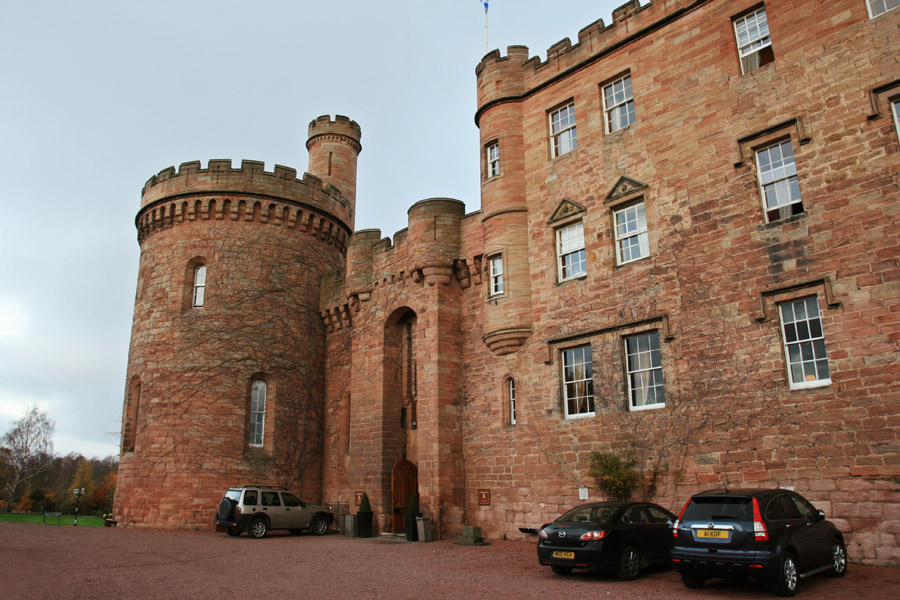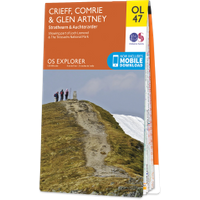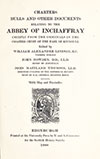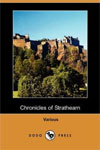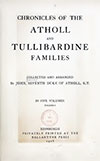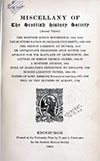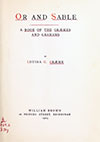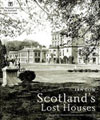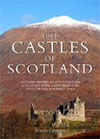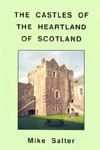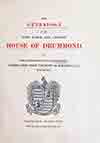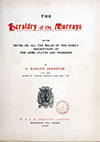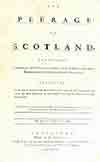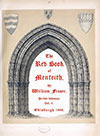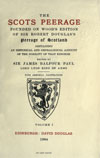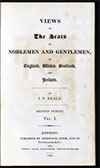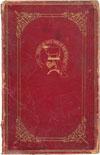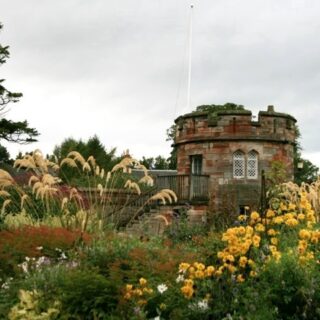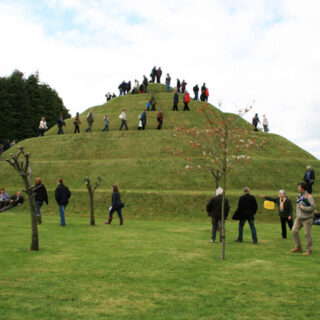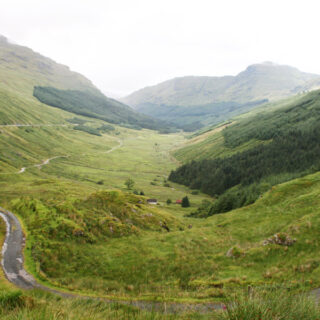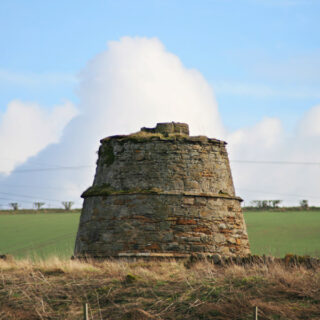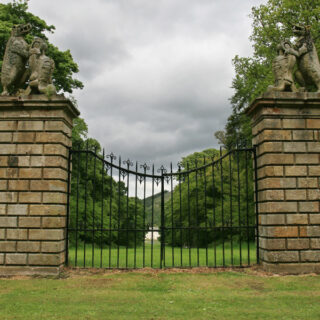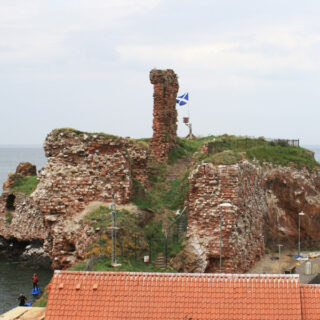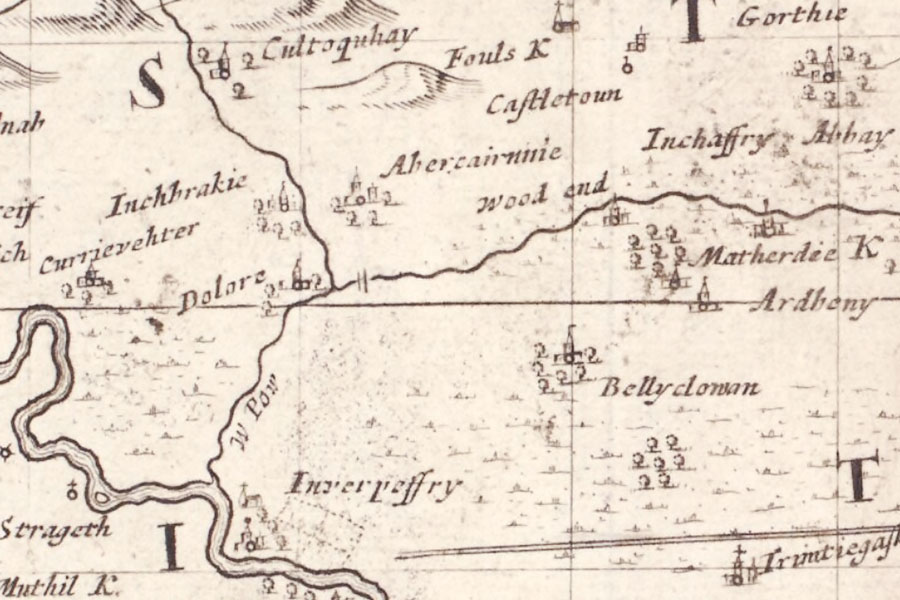

John Adair, 1720map image courtesy of NLS
Abercairny was a property belonging to the Moray or Murray family in the late 13th century, however it was demolished in the 19th century and replaced with a new house which was itself demolished and replaced in the 20th century.
The “old house” was described, in 1883, as having been “situated a little to the south-east of the present building, and on the south side of the lake….The older part of this house was baronial in character, but latterly, from the many additions and alterations which had been made upon it, the design was considerably mixed”. This may suggest that some of the house dated to the sixteenth or seventeenth centuries.
The lands of Abercairny first seem to be mentioned in the early 13th century when they were in the possession of Ysenda of Kinbuck, sister of Sir Richard and Geoffrey of Gask. Ysenda was the second wife of Gille Brigte or Gilbert, Earl of Strathearn. Some time between 1221 and 1223 Ysenda gave 5 acres of her land at Abercairny to Inchaffray Abbey.
Despite Gilbert and Ysenda not having any children Abercairny seems to have become a property of the Earls of Strathearn, passing down the line of Gilbert’s children from his first marriage to Matilda or Maud, the daughter of William d’Aubigny, 3rd Earl of Arundel.
When Gilbert’s great-great-great-granddaughter Mary or Maria, daughter of Malise IV, Earl of Strathearn, married Sir John Moray of Drumsargard, grandson of the celebrated Andrew de Moray, Abercairny was given as a dowry along with the lands of Ogilvie and Glenservy.
The date of their marriage is given variously as 1299 or between 1319 and 1322, the later dates seeming more likely, and some sources refer to the lands being given in 1320. A charter confirming the lands to them was issued by her brother, Malise V, around 1330 soon after he succeeded their father as Earl of Strathearn.
When the first building was constructed at Abercairny, or what form it took, doesn’t seem to be known, although it seems entirely plausible that there would be a defensible property there in the 13th or 14th centuies. At that time the surrounding area was marshy, offering a further degree of protection.
There is some confusion regarding the lineage from Sir John and Mary, but what is known is that a Maurice Moray, or Maurice de Moravia, succeeded to Abercairny. He is variously described as the son of Sir John and Mary or the son of Sir John and his unnamed first wife.
Maurice married, possibly in 1339, a woman named Joan, Joanna or Johanna. She is described in some sources as the Countess of of Strathearn and in others as the daughter of Sir John Menteith of Rusky, but these may be two different people.
Further confusion stems from the fact that Maurice’s grandfather, Malise IV, had also been married to a woman named Joan, and some authors have suggested that his grandson’s wife was one and the same although this seems highly unlikely.
Maurice, was created Earl of Strathearn in 1343, by David II, Maurice’s uncle Malise V having forfeited the earldom for opposing Edward Balliol, but died at the battle of Durham in 1346. Maurice’s brother, Sir Alexander Moray, was served heir to their father in 1349, and Abercairny next passed to Sir Alexander’s son, Sir Andrew Moray, the product of his marriage to Janet or Joanna, daughter of William, 5th Earl of Ross. Sir Andrew married Agnes, daughter of Sir Humphry Cunningham of Glengarnock and Abercairny passed to their son, Sir Humphrey Moray, in the mid-15th century.
Sir Humphrey married Katherine, sister of Patrick Graham, 1st Lord Graham, and their son, Andrew Moray, succeeded his father in 1504. However Andrew and his son, George, were both killed at Flodden in 1513 and Abercairny passed to George’s son, John Moray, who himself was killed at Pinkie. John had married his first cousin twice removed, Nicola, daughter of William Graham, 2nd Earl of Montrose, in 1539 and upon his death Abercairny passed to their son, William Moray.
In 1553 William married Margaret, daughter of Laurence Oliphant, 3rd Lord Oliphant, but five years later he died and was succeeded by his brother, Robert Moray. Robert married Catherine or Katherine, the third daughter of Sir William Murray of Tullibardine, in 1560. Abercairny passed to their first son, Sir William, following Robert’s death in 1594.
On Pont’s late 16th century map of Strathearn Abercairny is marked as a castle named Akerny.
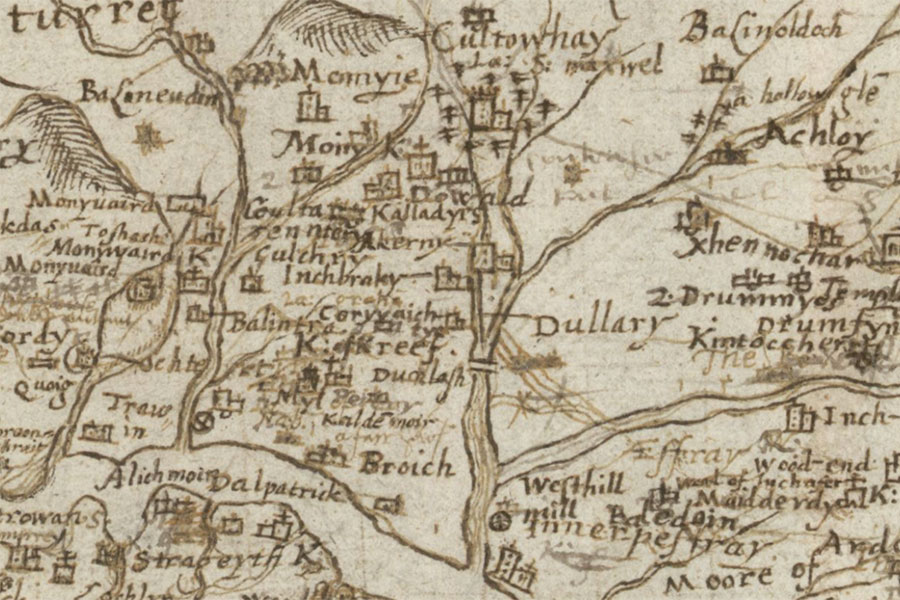
In 1629 Sir William was served heir to his younger brother, Sir David Murray of Gorthy, when he died without issue. Sir William sold the lands of Gorthy to George Graeme, Bishop of Orkney and former Bishop of Dunblane, the younger son of George Graeme of Inchbraikie, and his eldest son David Graeme in 1631.
Sir William married Christian, daughter of Sir Laurence Mercer of Aldie. Their daughter, Mary, married Patrick Murray of Ochtertyre, and Mary and Patrick’s second son, James, minister of Logierait, was given the lands of Wester Dollerie, becoming the ancestor of the Murrays of Dollerie. Easter Dollerie subsequently became the property of the Murrays of Abercairny.
Sir Robert Moray of Ogilvie, the son of Sir William and Christian, predeceased his father and Abercairny passed to his son, also William, upon Sir William’s death in 1640. The younger William died just two years later however and Abercairny passed to his eldest son, Sir Robert, by his wife Ann, daughter of George Hay of Keillour.
There are three sundials at Abercairny which may all date from this period, one of which now stands in the 19th century walled garden to the north of the new house.
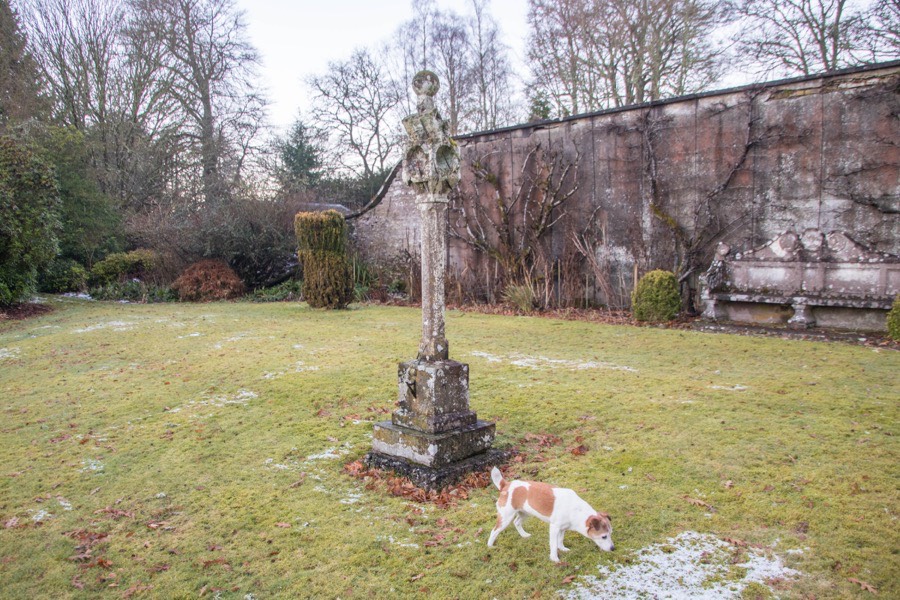
Sir Robert married Anne or Anna, daughter of Patrick Graeme of Inchbraikie, and upon his death in 1704 Abercairny passed to their son, William. William, who sold the lands and barony of Ogilvie to Mungo Graeme of Gorthy in 1707, died in 1735 and was succeeded by his son, James.
The Moray family were loyal to the Stuart cause but didn’t play an active role in the Jacobite risings and so held onto their estates. Between 1737 and 1738 extensive repairs were carried out on Abercairny for James by the architect John Douglas, and between 1755 and 1759 Charles Freebairn created a new dining room.
James had married Christian, the sixth daughter of Alexander Montgomery, 9th Earl of Eglinton, in 1737 and Abercairny passed to their second son, Alexander, following James’ death in 1778. However Alexander died without issue and was succeeded by his younger brother, Colonel Charles Moray, in 1784 or 1786. Charles had married Anne, the eldest daughter of Sir William Stirling of Ardoch, in 1778 and as well as adding the Ardoch lands to his own he also added the Stirling name to become Colonel Charles Moray Stirling.
Moray Stirling set about improving Abercairny, with plans drawn up in 1793 to improve the estate. In 1796 the architect John Paterson was asked to design a new house but this work seems not to have been completed and instead he only provided plans for an oval dining room in the old house which also weren’t executed. The architects Archibald Eliot and Charles Tatham were next to be tasked with designing a new house, but instead Richard Crichton was employed to create it.
Early in the 19th century Abercairny, which latterly had been occupied by farm workers, was demolished. It was replaced by a new house, a long three storey mansion situated on a new site around 600 metres to the north-west.
Work began in 1804 but when Moray Stirling died in 1810 the building was still an unfinished shell. His son, Colonel James Moray, inherited the project and considerable debts from his father. By 1814 his situation had improved and he assumed the role of client. However in 1817 Crichton died and the work was continued by his nephews and apprentices Richard and Robert Dickson from 1820 to 1823 and from 1826 to 1835.
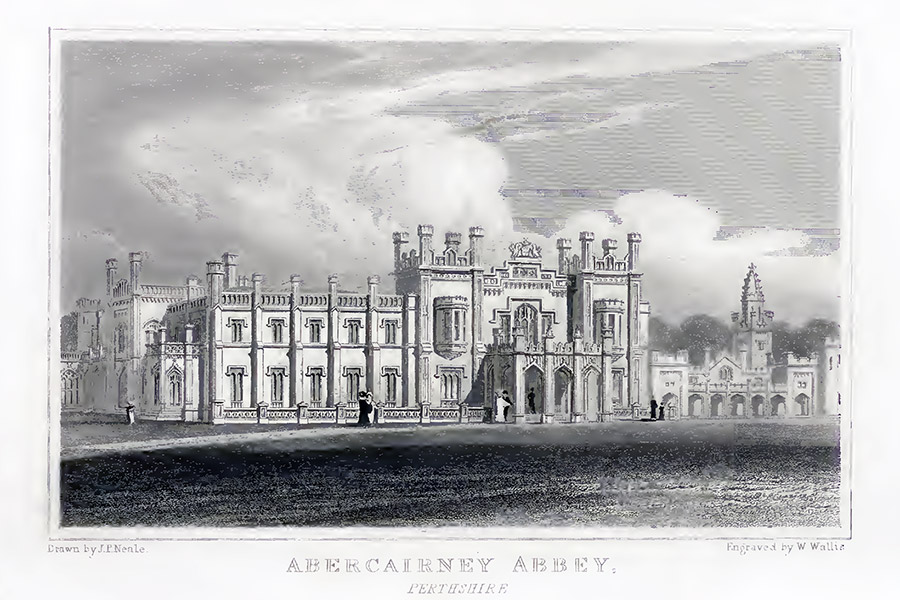
John Preston Neale, London, 1823
James died without issue in 1840 but the work continued into the 1840s for his brother and heir Major William Moray-Stirling, with a stable block added to the north-east of the new house.
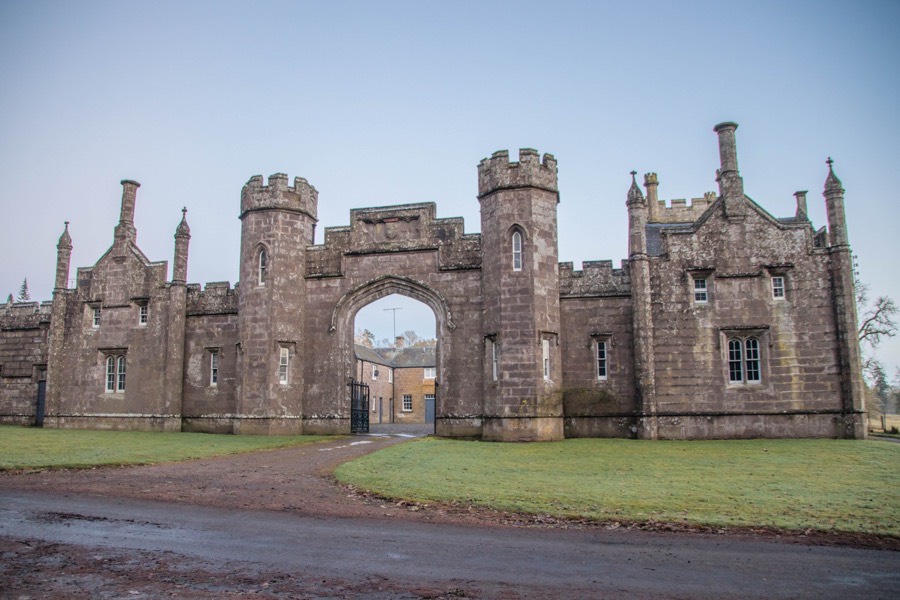
Following William’s death in 1850 the Abercairny and Ardoch estates passed first to his sister, Christian, and her husband Henry Home-Drummond of Blair Drummond then upon her death in 1864 to their son Charles Stirling Home Drummond Moray. Charles improved the estate considerably and was responsible for a four storey castellated Gothic tower being added to the east end of the mansion by the architect Robert Thornton Shiells in 1869.
With the interest in the Gothic style at its height, the family flirted with the idea of calling the building Abercairny Abbey or Abercairny Castle, but neither name stuck and it was simply referred to as Abercairny.
Following the death of Charles’ brother, George Home-Drummond of Blair Drummond and Ardoch, in 1876 those estates were inherited by the Abercairny branch of the family. In 1882 Charles bought the estate of Inchbraikie from his neighbour and relative Patrick Graeme, who had inherited it along with considerable debt from his father.
When Charles died in 1891, Blair Drummond and Ardoch passed to his eldest son Henry Edward Stirling Home-Drummond (who dropped the Moray from his surname) and Abercairny to his youngest son, William Augustus Home-Drummond Moray.
During World War II Abercairny was used as a hospital and by 1960 was in such a poor condition that Charles’ grandson, Major W.S. Drummond Moray, decided to demolish it. A smaller replacement house, designed in the neo-Georgian style by Claud Phillimore, was built on the same site, taking advantage of its position in the grounds, which are considered to be an important example of a late 18th and early 19th century designed landscape.
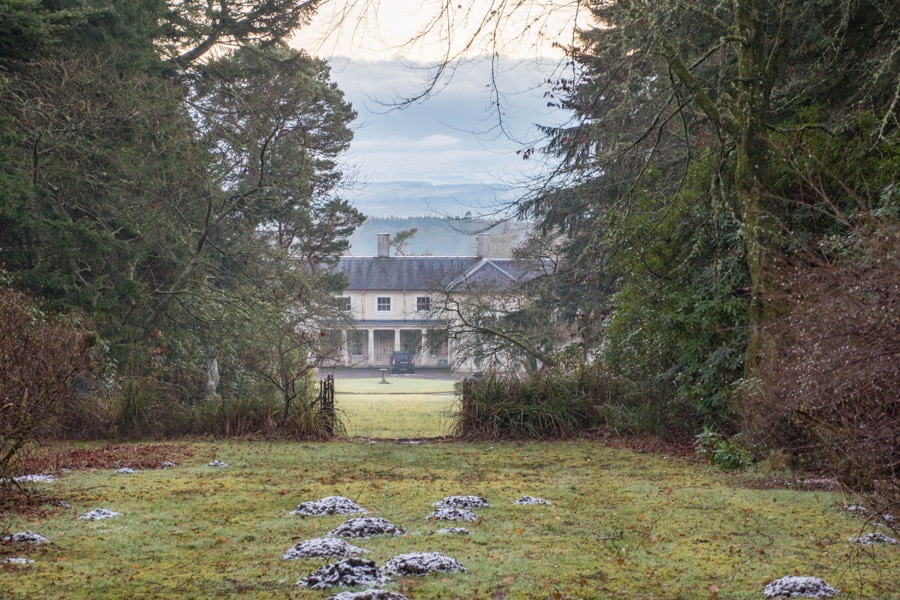
Alternative names for Abercairny
Abercairney; Abercairney Abbey; Abercairnie; Abercairnnie; Abercairny Abbey; Abercairny Castle; Abercairny House; Abercarnie; Abercarney; Abercarnich; Abircairnie; Abircairny; Abircardny; Akerny
